Marine Application
Inland River Powered Ship Gas Supply System
The second-generation inland river vessel gas supply system stabilizes the natural gas produced by vaporizing LNG and supplies it to the marine gas engine to provide propulsion and auxiliary power for the vessel. Core components of the system, including the cryogenic storage tanks and heat exchangers, are independently designed and manufactured, signifying the full transition to autonomous production for marine gas supply systems.
The second-generation inland river vessel gas supply system stabilizes the natural gas produced by vaporizing LNG and supplies it to the marine gas engine to provide propulsion and auxiliary power for the vessel. Core components of the system, including the cryogenic storage tanks and heat exchangers, are independently designed and manufactured, signifying the full transition to autonomous production for marine gas supply systems.
Functions and Features
● Integrated Design: Fully equipped with a compact layout and high space utilization, optimized for marine installation.
● Stable Gas Supply: Ensures consistent fuel delivery with high compatibility to main engine power demands.
● Enhanced Insulation: Inner container layer lined with flame-retardant and thermal insulation material, providing excellent thermal performance.
● Advanced Adsorption: Utilizes 5A + 13X molecular sieves for significantly improved adsorption efficiency.
● Modular Assembly: Container connected to winding fixtures via bolted joints, ensuring high winding efficiency and ease of disassembly for maintenance.
● Efficient Heat Exchange: Spiral coil heat exchanger design delivers high heat transfer efficiency.
● Robust Construction: High pressure-bearing capacity, strong overload resistance, excellent impact resilience, and high safety factor for marine operations.
● Redundant Safety: Double-layer structure with elastic supports and flexible piping for safe and reliable operation in dynamic marine environments.
● Serviceability: Convenient inspection access, logical section division, and rapid, controlled construction and commissioning.
Functions and Features
● Integrated Design: Fully equipped with a compact layout and high space utilization, optimized for marine installation.
● Stable Gas Supply: Ensures consistent fuel delivery with high compatibility to main engine power demands.
● Enhanced Insulation: Inner container layer lined with flame-retardant and thermal insulation material, providing excellent thermal performance.
● Advanced Adsorption: Utilizes 5A + 13X molecular sieves for significantly improved adsorption efficiency.
● Modular Assembly: Container connected to winding fixtures via bolted joints, ensuring high winding efficiency and ease of disassembly for maintenance.
● Efficient Heat Exchange: Spiral coil heat exchanger design delivers high heat transfer efficiency.
● Robust Construction: High pressure-bearing capacity, strong overload resistance, excellent impact resilience, and high safety factor for marine operations.
● Redundant Safety: Double-layer structure with elastic supports and flexible piping for safe and reliable operation in dynamic marine environments.
● Serviceability: Convenient inspection access, logical section division, and rapid, controlled construction and commissioning.
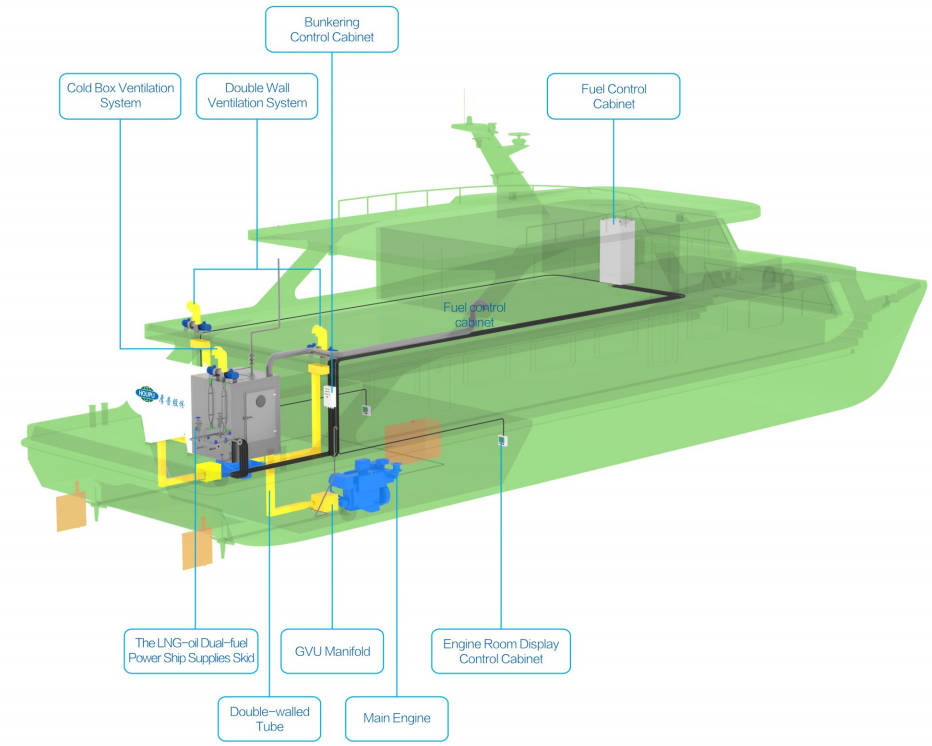
Marine LNG Gas Supply System-
Marine LNG Gas Supply System
The Marine LNG Gas Supply System is specifically designed for LNG-fueled vessels and serves as an integrated solution for gas supply management. It enables comprehensive functions including automatic and manual gas supply, bunkering and replenishment...
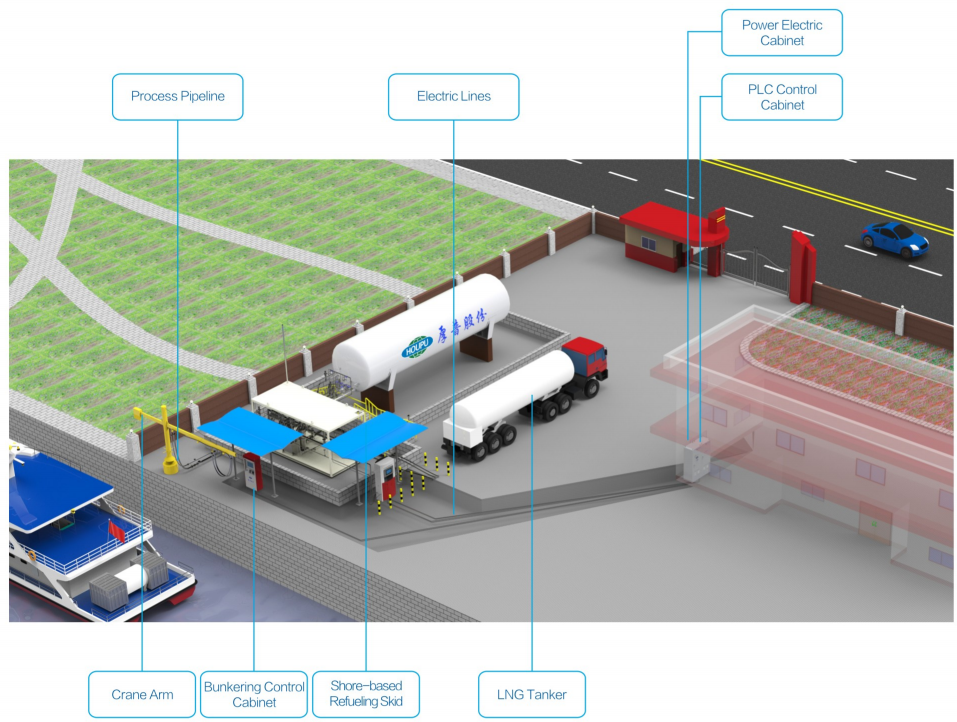
Shore-based LNG Bunkering Station Pump Skid-
Shore-based LNG Bunkering Station Pump Skid
The shore-based LNG bunkering station is a land-based facility constructed along coastal or inland waterways. Suitable for areas with flat terrain, proximity to deep water zones, narrow channels, and environments compliant with the "Interim Provision...

Mobile LNG Bunkering Station Pump Skid-
Mobile LNG Bunkering Station Pump Skid
The Mobile LNG Bunkering System is a flexible refueling solution designed to service LNG-powered vessels. With minimal requirements for water conditions, it can perform bunkering operations from various sources including shore-based stations, floatin...
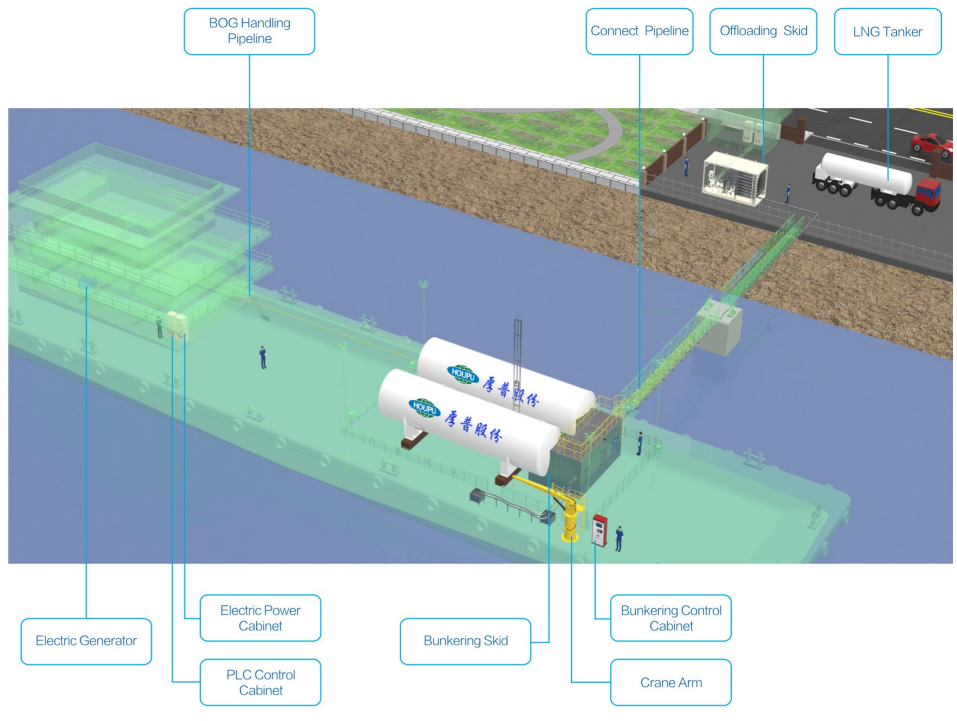
Floating LNG Bunkering Station Pump Skid-
Floating LNG Bunkering Station Pump Skid
The floating ship-based LNG bunkering system is a non-self-propelled vessel equipped with complete refueling infrastructure. It is ideally deployed in sheltered waters with short shore connections, wide channels, gentle currents, deep water depths, a...
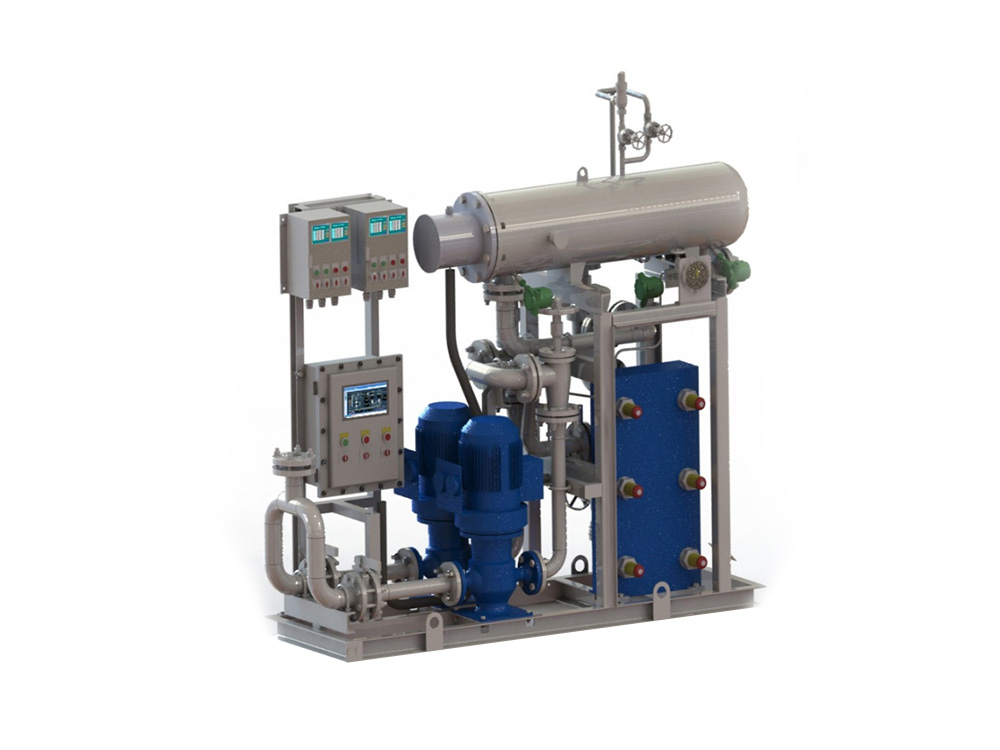
Marine Glycol Heating Equipment-
Marine Glycol Heating Equipment
The Marine Glycol Heating Equipment is a specialized thermal management system designed for marine applications, particularly in LNG-powered vessels. This equipment efficiently heats glycol-water mixture to provide reliable thermal energy for various...
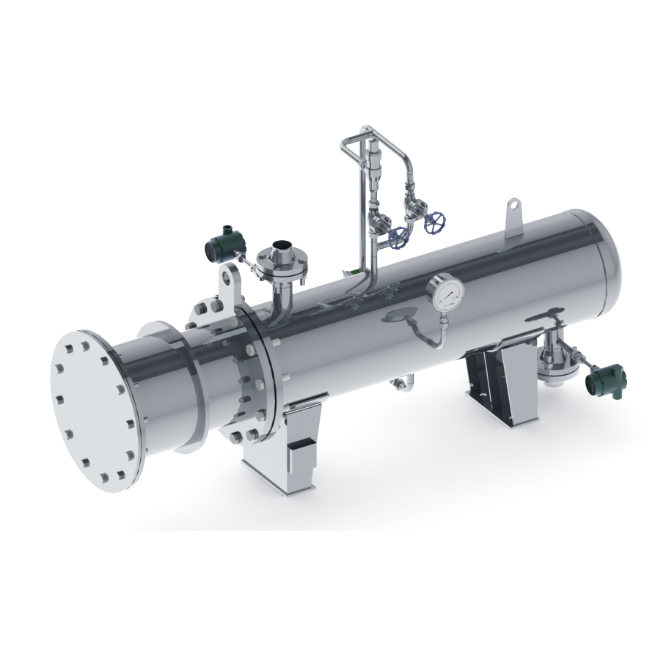
Marine Heat Exchanger-
Marine Heat Exchanger
In LNG dual-fuel powered vessels, the gas supply system for dual-fuel engines utilizes LNG as the primary fuel source. LNG is stored in cryogenic tanks or cargo tanks, then pressurized by pumps or tank booster units before being supplied to the gas d...

LNG-Powered Ship Control System-
LNG-Powered Ship Control System
This control system is designed in full compliance with the China Classification Society (CCS) "Rules for Natural Gas Fuelled Ships" (2021 Edition), specifically meeting the requirement for "separate control of fuel monitoring, control system and saf...
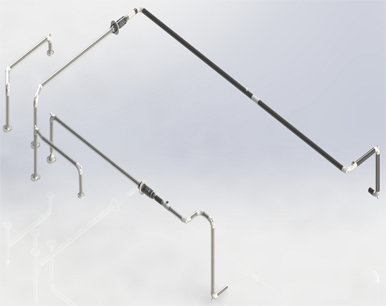
Marine Double-Wall Pipe System-
Marine Double-Wall Pipe System
The marine double-wall pipe system features a pipe-within-a-pipe configuration, where the inner carrier pipe is enclosed within an outer jacket pipe, creating an annular space between the two layers. This interstitial space serves as a containment ba...

Marine LNG Gas Supply System-
Marine LNG Gas Supply System
The Marine LNG Gas Supply System is specifically designed for LNG-fueled vessels and serves as an integrated solution for gas supply management. It enables comprehensive functions including automatic and manual gas supply, bunkering and replenishment...

Shore-based LNG Bunkering Station Pump Skid-
Shore-based LNG Bunkering Station Pump Skid
The shore-based LNG bunkering station is a land-based facility constructed along coastal or inland waterways. Suitable for areas with flat terrain, proximity to deep water zones, narrow channels, and environments compliant with the "Interim Provision...

Mobile LNG Bunkering Station Pump Skid-
Mobile LNG Bunkering Station Pump Skid
The Mobile LNG Bunkering System is a flexible refueling solution designed to service LNG-powered vessels. With minimal requirements for water conditions, it can perform bunkering operations from various sources including shore-based stations, floatin...

Floating LNG Bunkering Station Pump Skid-
Floating LNG Bunkering Station Pump Skid
The floating ship-based LNG bunkering system is a non-self-propelled vessel equipped with complete refueling infrastructure. It is ideally deployed in sheltered waters with short shore connections, wide channels, gentle currents, deep water depths, a...

Marine Glycol Heating Equipment-
Marine Glycol Heating Equipment
The Marine Glycol Heating Equipment is a specialized thermal management system designed for marine applications, particularly in LNG-powered vessels. This equipment efficiently heats glycol-water mixture to provide reliable thermal energy for various...

Marine Heat Exchanger-
Marine Heat Exchanger
In LNG dual-fuel powered vessels, the gas supply system for dual-fuel engines utilizes LNG as the primary fuel source. LNG is stored in cryogenic tanks or cargo tanks, then pressurized by pumps or tank booster units before being supplied to the gas d...

LNG-Powered Ship Control System-
LNG-Powered Ship Control System
This control system is designed in full compliance with the China Classification Society (CCS) "Rules for Natural Gas Fuelled Ships" (2021 Edition), specifically meeting the requirement for "separate control of fuel monitoring, control system and saf...

Marine Double-Wall Pipe System-
Marine Double-Wall Pipe System
The marine double-wall pipe system features a pipe-within-a-pipe configuration, where the inner carrier pipe is enclosed within an outer jacket pipe, creating an annular space between the two layers. This interstitial space serves as a containment ba...
